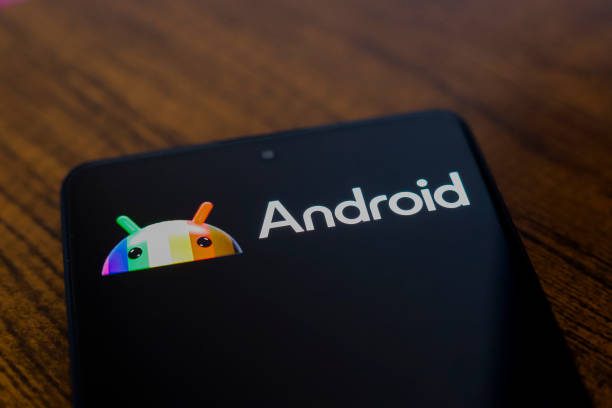Switching from an iPhone to an Android phone is now more straightforward than ever before. Despite ongoing debates about which platform is superior, the truth is that iPhones and Android phones have much in common. Nowadays, you can transfer almost everything, from photos to messages, when making the switch between these two systems.
With the upcoming iOS 18 update, iPhone users will finally receive RCS messaging—an upgrade from the traditional SMS that promises to resolve many of the issues currently encountered when texting between iPhone and Android devices. This development might encourage some users to consider exploring a new operating system. Here’s a comprehensive guide on how to switch from an iPhone to an Android phone, ensuring you carry over all your essential data.
What You’ll Need:
- Your old iPhone
- Your SIM card (not necessary for eSIM activation)
- Your Wi-Fi network details (including your password)
- Your Google account information (while it’s possible to set up an Android device without a Google account, having one enhances your experience by unlocking Google services)
- A switching app (such as Google’s Switch to Android or Samsung Smart Switch Mobile)
- A USB-C to USB-C or Lightning to USB-C cable (optional, but it speeds up the data transfer process)
Backing Up Your Data
Though transferring data from an iPhone to an Android device is usually straightforward, it’s wise to back up your data first. Doing so ensures that you don’t lose anything important. Some methods require a backup to restore data on your new device. Backing up your iPhone to iCloud is advisable, though you might also want to consider Google One as an additional backup option.
If you use apps like WhatsApp, you can back up your conversations within the app (Settings > Chats > Chat backup). Additionally, consider any authenticator apps you use and check their transfer processes to avoid losing access to secure services and websites.
Preparing Your iPhone for the Switch
Keeping your old iPhone during the switching process simplifies and speeds up the transition. Before you begin, take care of a few tasks on your iPhone. First, disable iMessage and FaceTime by going to Settings > Messages and toggling off iMessage, then doing the same for FaceTime. If you forget to do this and no longer have your iPhone, you can deregister on Apple’s support page.
Check how much data is stored on your iPhone by navigating to Settings > General > iPhone Storage. Ensure your new Android device has enough space to accommodate everything you plan to transfer. If there isn’t enough room, consider deleting unnecessary data. Once these steps are complete, you’re ready to switch.
Transferring Data Using a Cable
The quickest and most efficient way to transfer your data is through a cable. The process varies slightly depending on the Android manufacturer, but here’s a general guide for switching to a Google Pixel:
- Turn on your new Pixel, select your language and region, and tap Get Started.
- On the Set up using another device page, select iPhone or iPad.
- Connect to your Wi-Fi network; this might take a few minutes as the phone checks your information.
- Sign in to your Google account.
- Insert your SIM card or set up your eSIM.
- Set up a PIN and fingerprint unlock.
- To copy data from your iPhone, tap Next.
- Connect your iPhone to your Pixel using a Lightning to USB-C cable (or a USB-C to USB-C cable if you have an iPhone 15 or later).
- Enter your iPhone PIN to trust the connected Pixel.
- Select the data you want to copy and tap Copy to begin the transfer.
- If you opt to transfer apps, the Pixel will present a list of matching apps it found (note that some in-app purchases and settings may not transfer, and you may need to repurchase certain premium apps).
- Once the transfer is complete, disconnect your iPhone and finish setting up your new Pixel.
Transferring Data Wirelessly
If you don’t have a cable or prefer not to use one, you can transfer your data wirelessly. While this method takes longer and may not transfer all data, it remains a viable option.
Using a Switching App
To transfer data wirelessly, consider installing a switching app on your iPhone before starting. If you’re switching to a Pixel, Google will prompt you to install the Switch to Android app as part of the process. Samsung users can use the Samsung Smart Switch Mobile app.
For a Pixel, the process is similar to the wired method. When you reach the Connect both devices step, tap Cable doesn’t fit? > No adapter? and choose Copy without cable. Scan the QR code on your iPhone to install the Switch to Android app (if you haven’t already) and begin the transfer.
For Samsung devices, open the Smart Switch app on your iPhone and follow the instructions. Choose Transfer wirelessly on the Get connected page, then scan the QR code on your new Samsung phone to start the transfer. If you’ve backed up to iCloud, you can select Get data from iCloud, but you’ll need to log in to your iCloud account.
Using Google One
If you’re only interested in transferring contacts, calendar events, photos, and videos, Google One offers a simple solution. Here’s how:
- Install Google One on your iPhone and open it.
- Tap Menu (three horizontal lines) at the top left.
- Choose Settings, then Sync settings.
- Select what you want to sync: Photos & videos, Contacts, and Calendars.
- Open the Google One app on your new Android phone to access your synced data.
Transferring Data from iCloud
If you’ve already wiped your iPhone or no longer have it, you can still recover your photos and videos from iCloud, provided you backed up your data. Here’s how:
- Visit Apple’s Data and privacy page.
- Enter your Apple ID and password.
- Select Request to transfer a copy of your data.
- Choose Google Photos from the drop-down menu, check the boxes for Photos and Videos, and click Continue.
Getting Started with Android
Android devices are just as capable as iPhones, so adapting to the new operating system should be relatively easy. To make the transition smoother, you might want to explore how to set up your Android phone, tweak lesser-known settings, or adjust key configurations on your new Samsung Galaxy device. And if you encounter any issues, consulting an Android recovery mode guide can be helpful.
Transitioning from iPhone to Android has never been easier, thanks to the tools and options available to users today. By following these steps, you can ensure a smooth and hassle-free switch while keeping all your important data intact.

















